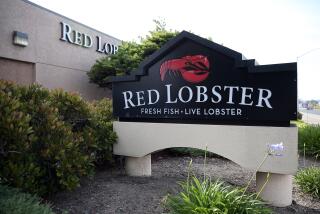Bankruptcy judge to confirm Tribune reorganization plan
- Share via
After more than 31/2 years of bitter legal conflict, the judge in Tribune Co.’s bankruptcy case said he would approve a plan to transfer ownership of the Chicago media company to a group of hedge funds and banks based in Los Angeles and New York.
But in a memorandum overruling objections by junior creditors and others, U.S. Bankruptcy Judge Kevin Carey said the plan’s proponents first would have to make revisions to reflect recent court rulings.
A lawyer in the case said that would require the company to edit the plan and craft a new confirmation order that would be distributed to all parties for review, a process that could extend formal approval until at least late next week.
The plan’s confirmation would represent the beginning of the end of a Chapter 11 case that has left the company in limbo since December 2008.
It also would launch a fresh period of uncertainty as the new ownership group moves to appoint its own board of directors and wrestles with the challenge of extracting value from a company reeling from the changes sweeping the media industry.
Tribune owns the Los Angeles Times, KTLA-TV Channel 5, the Chicago Tribune and other media properties.
Junior creditors opposed to the plan have pledged to appeal Carey’s decision, and related legal battles stemming from the company’s 2007 leveraged buyout are likely to continue for years. Few experts expect the appeals to gain traction.
After the filing of Carey’s opinion, Tribune could move forward in seeking Federal Communications Commission approval to transfer its TV and radio broadcast licenses to the new owners — a group of senior creditors led by Oaktree Capital Management, Angelo Gordon & Co. and JPMorgan Chase & Co.
Tribune also could accelerate work on other administrative and financial matters that must be completed before it can emerge from bankruptcy. Those include reshaping its corporate structure and obtaining $1.1 billion in debt financing and a $300-million line of credit.
Experts said it was impossible to predict how long the exit process would take, especially the effort to win FCC approvals. But there is little to indicate that any of the remaining obstacles would prevent Tribune from exiting the Chapter 11 process later this year.
Tribune fell into Bankruptcy Court less than a year after Chicago billionaire Sam Zell took the company private, saddling it with $13 billion in debt just as the economy and advertising markets began to collapse.
Since then, Tribune has lost thousands of employees, endured an embarrassing management crisis and, like all conventional media companies, struggled to find a new business model as the proliferation of websites and mobile devices transformed how people consume news.
The new Tribune will be controlled by financial interests on the East and West coasts. Its flagship newspaper group has withered in value to about $623 million, according to company reports. Tribune recently valued its 23 television stations at $2.9 billion.
The company’s equity investments in entities such as the TV Food Network and CareerBuilder.com are valued at more than $2 billion.
In the wake of News Corp. Chairman Rupert Murdoch’s recent decision to split his company into a newspaper division and a Fox television/movie unit, many experts predict Oaktree and its partners will soon look to break up Tribune and sell its papers, perhaps to local buyers looking to preserve a civic institution.
Los Angeles billionaire Eli Broad has again expressed interest in forming a group to buy The Times. In Chicago, an investor group led by entrepreneur Michael Ferro recently bought the Chicago Sun-Times and the Chicago Reader, though Ferro has denied any interest in buying the Tribune. Billionaire investor Warren Buffett has been on a newspaper buying spree lately.
The new owners have yet to lay out what they plan to do with Tribune once they assume control. They have lacked sufficient access to the company’s operations to analyze their potential adequately, and the ownership group hasn’t always seen eye to eye during the contentious bankruptcy process and still must align its priorities.
During the bankruptcy, the company accumulated more than $2 billion in cash. Most of that will be distributed to creditors, but Tribune will be left with a cash cushion of about $325 million, documents show.
The new owners are exploring new acquisitions on the TV side and selling newspapers as buyers emerge, among other options, according to people close to the process. They are likely to take the company public within the first year after leaving bankruptcy to give investors a way to cash out.
Oaktree, the largest shareholder with about 22% of the equity, would have the right to appoint two of seven board members. Angelo, Gordon will have 9%, JPMorgan, 8%, and each will control one board seat. All three investors will appoint two more board members and a final seat will be reserved for the chief executive.
No decision has been made about whether to retain Eddy Hartenstein as chief executive. A spokesman said Hartenstein would not comment. The new owners are casting a wide net for a new CEO, according to people close to the plans.
The contentious Tribune case has led many to criticize a bankruptcy system that has become increasingly dominated by distressed debt investment funds that purchase an ailing company’s debt on the cheap and then fight it out in court to increase the value of their stake.
Attorneys and other professionals have billed the Tribune estate more than $400 million. And the collateral damage has been severe for thousands of individual shareholders and small creditors.
Phil Franzese, 72, of New York, for instance, hasn’t received any retirement payments from a $218,000 deferred compensation fund since December 2008.
“It’s been like a bad movie,” Franzese said Friday. “This could have been over a long time ago.”
Oneal reported from Chicago; Puzzanghera from Washington
More to Read
Inside the business of entertainment
The Wide Shot brings you news, analysis and insights on everything from streaming wars to production — and what it all means for the future.
You may occasionally receive promotional content from the Los Angeles Times.











